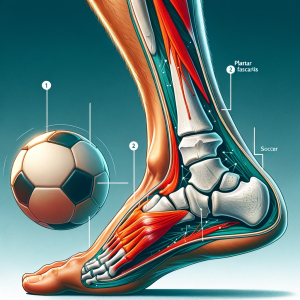
Soccer May Not be Enough to Prevent Obesity
Soccer is often hailed as the ultimate youth sport. With its fast pace and reliance on teamwork, it seems like the perfect solution to keep kids active, healthy, and off their screens. But here’s a surprise: being on the soccer field might not be enough to counter childhood obesity. Even young soccer players can face health challenges if their energy intake and physical activity don’t balance out.
The latest research paints a fascinating picture of what’s really happening with kids who play soccer. These findings reveal a significant gap between our assumptions about youth sports and the actual outcomes. This gap is a wake-up call for coaches, parents, and health professionals alike. So, what can we learn from this study, and how can we apply it to ensure soccer leads to healthier kids?
Why Soccer Isn’t Always Enough
You might assume that any child who plays soccer regularly is burning off enough calories to stay in shape. However, the research tells a different story. Despite participating in soccer, many Tunisian youth in the study were found to have an imbalance between the calories they consumed and the energy they expended.
The issue wasn’t just with how much these kids ate—it was what they ate. Many of these soccer players consumed high amounts of carbohydrates and saturated fats, often found in sugary snacks, fast food, and soft drinks. On top of that, they weren’t getting enough essential nutrients like omega-3 fatty acids, magnesium, and vitamins B9, B12, and D. These poor eating habits, combined with a lack of consistent physical activity outside of soccer, contributed to high rates of obesity and related health problems, like elevated cholesterol and insulin resistance.
The Soccer Player Dilemma
Imagine a typical Saturday at the soccer field. Kids run back and forth, sweating under the sun. By all appearances, they’re getting plenty of exercise. But what happens off the field?
For many overweight or obese kids, soccer isn’t enough to counteract hours spent in front of screens and poor food choices. These children may not be reaching the activity levels required to maintain a healthy weight. In the study, overweight and obese soccer players were found to spend more time sitting and less time moving, even during practice. They were less likely to fully participate in training sessions, often becoming fatigued and cutting back their efforts.
This creates a vicious cycle: lower fitness levels make it harder to stay active, leading to more weight gain and even lower energy levels.
A Closer Look at the Data
The Tunisian study examined 226 boys aged 8 to 13 who attended soccer academies. Despite their participation in soccer, over half of these young players were classified as overweight or obese. Almost all children had a poor diet, favoring high-energy foods like refined carbs and saturated fats over nutrient-rich options like fruits and vegetables.
Moreover, these children weren’t compensating for their poor diets with increased activity. Most overweight kids showed low physical activity levels outside of soccer practice. Their sedentary lifestyles meant they weren’t burning enough calories, even when playing soccer twice a week.
One telling statistic: normal-weight kids in the study showed moderate to high levels of activity, while only 1-2% of overweight and obese children reached those levels. The takeaway is clear: just because a child plays soccer doesn’t mean they’re meeting their body’s needs for physical exertion and healthy eating.
Balancing Energy Intake and Activity
So, what’s the solution? The problem isn’t soccer itself—it’s how we approach soccer and sports in general. Playing soccer can be a powerful tool for promoting health, but it needs to be paired with balanced nutrition and consistent physical activity. Here are three simple tips for improving outcomes:
- Emphasize Nutritional Education: Coaches and parents must work together to ensure kids understand the importance of what they eat. Just like practicing drills, kids should “train” their eating habits, choosing foods that give them energy without excess sugar or fat.
- Increase Activity Beyond Soccer: Soccer practices alone won’t cut it. Encourage kids to be active outside of practice—whether through walking, biking, or even playing informal games with friends. Small changes in daily routines can add up to big health improvements.
- Monitor and Adjust: Both coaches and parents should keep an eye on a child’s energy intake and activity levels. If a player isn’t losing weight or staying active outside practice, adjust their training or diet accordingly.
Applications for Coaches and Clubs
What can soccer coaches and clubs do to support their players’ health? Here are practical steps based on the study’s findings:
1. Incorporate Nutrition Lessons into Training
It’s not enough to focus on physical drills. Soccer academies should offer guidance on balanced diets, showing kids and their families how to fuel their bodies properly. Simple changes like replacing sugary snacks with fruits can make a big difference.
2. Promote Active Lifestyles Beyond Practice
Coaches can set the tone by encouraging kids to stay active throughout the week. This might mean assigning simple fitness challenges (like step counts) or hosting extra training sessions focused on general fitness.
3. Tailor Training for Overweight Players
Overweight and obese children need extra support during practice. Design drills that help them gradually build their fitness without overwhelming them. Incorporating fun, low-intensity activities can help increase their endurance and interest in staying active.
So?
Soccer can be a game-changer for youth health—but it takes a well-rounded approach to ensure kids aren’t just playing the game but also living healthier lives.



